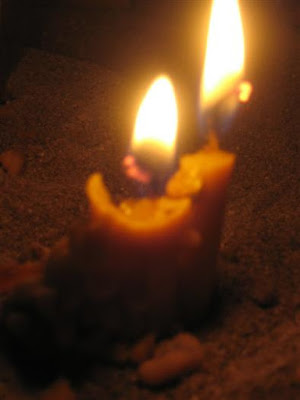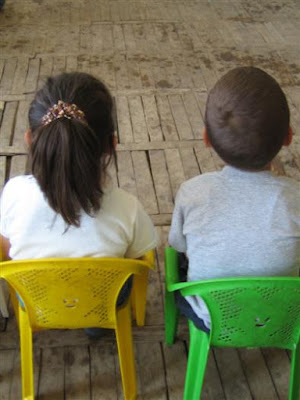Tatev is on 1600 metres from sea, from the Northwestern part Tatev is surrounded with mountain- chains and snow-covered tops. Small fast rivers are running to the Southeast. All the mountainsides and valleys have clear, pure and transparent springs, in summer they are covered with variegated flowers: the queens are narcissus and ѳñ÷³½. Tatev is surrounded with deep canyons, defiles, hills and waterfalls from the southeastern part, and it has fast falling rivers which are joined noisy Vorotan River In the distance of a kilometer from the village Tatev monastery is, the center of medieval Armenian holy culture in Syunik, built with high architectural art, surrounded with a number of historical columns and monuments.On centuries life in such a wonderful and beautiful nature, has its mark on Tatevian people way of life, character, diligence, firmness, skillfulness, ability, patriotism, physical culture and beauty.
1. Tatevian is corpulent, tall, fearless, firm, healthy and beautiful.
2. They are very diligent, know how to earn their living, to live on their toilsome work and never beg.
3. They live in a peace with neighborhood.
4. They are in a good condition with nest door; they often host each other in the evenings, have a talk, and tell tails, legends and sayings.
5. Any poor and unhappy family is always secured with people help; each district organizes a portion not to have anyone in necessity, especially in holidays.
6. Tatevian is not a speculator. They are not thrifts; there is no event in case of which Tatevian is accounted in robbery.
7. They are not pugnacious, have no habit of vengeance, and there are no event of kills each other, except a case.
8. Most of Tatevians are craftsmen, and a number of crafts which in all appearance are connected with the built of monastery.
9. Women were very skilled weavers, also carpet-makers, felt makers.
10. It seems to Tatevian must be fanatic believer in case of living so close the monastery, but it is opposite, they are not deep religious fanatic, as they saw the habits, happened in the monastery, and they reservedly refer religious dogmas.
11. Tatevians are capable, good-educated, speakers, brave, and critic, hit someone full in the face, and not used to protest to the superiors.
12. They are not eager to hold office; they are very decent in this case.
13. Tatevian is noble-minded, proud, witty, singers, playful, ready to laugh together.
14. They can sing traditional songs well, they organized competition of ox, especially at the time of carrying logs, gravestones.
15. Besides children and youths adults were organizing games, especially in ´³ñ"Ï"ݹ³Ý.
16. Tatevian is a great patriot, which was shown during the War II (1941-1945). We have a Soviet Hero: Suren Smbat Araqelyan.
Tatevian people occupation
Tatevian people occupation
Agronomy - the villagers saved wheat, rye, spring wheat, barley, spring barley, lentil, linseed, beans, and oats.The sowing was done with three-field system. Breadstuffs were gathering with sickle, but others picked up with hand. The harvest was carried from the fields to the village by asses, horses, mules, ox, even by people back from near place. Each family had barnyard and hayloft at the house. The barnyard was a level round land with 180 square meters expense. In the morning, especially women, spread the sheaf and began to thresh by ox and "KAMN". The "KAMN" was a desk, consists of two parts with 1.5 metes length, 0.80 weight, 5 centimeters thickness. The front part of it is a little inclined like a ski. The face, which must be on the stalk, is stony to break the stalk. There was a special device, which was united to the yoke. The ox was harnessed alone or couple and they were turning on the stalk carrying the "KAMN", since the wheat stalk became straw. A member of the family, especially teenager, was driving the "KAMN". After braying the stalk, the straw was gathered in the center of the barnyard to be pressed out. The main materials of the barnyard were "KAMN", yoke, the stick united to the yoke, splinter, "SMETAN", "MGHAN" besom, "TI" pitchfork and "VIRSILIN".Varies kind of sieves were used to clean the wheat. Non-bread-stuff harvest was separated from the straw with hands. The grass was collected by scythe. The sowing was done with wooden plough, which was called "Vesky" and was consists of 5-couple ox. The wooden plough had the following parts: Ploughshare.dghdfghsdfghdgfhdf? The seed was sowed on the cultivated land by hand; then it was harrowed.
Cattle rise - the villagers kept ox, cow, buffalo, sheep, goat, horse, mule, ash and hen. Essentially in winter the animals were kept in the cattle-shed near the houses, at the same time out of the village: in Tsaqut, Tzlokin valley, Gunei (sunny place), Urtukhaner and etc. (these are place names around the village). In summer, people having many animals nomad to Gzabel (Aramazd mountain), Michutu and different places, where they pitched tent.
Gardening - it wasn't so developed in Tatev. There were gardens only in Anapat (Desert on the bank of Vorotan River), where pear-tree, apple-tree, cherry-tree mulberry, nut-tree, cornel-tree and various sorts of fruit trees were planted.
Track-farming - it wasn't so mush used occupation. Only vegetable and haricot been were sowed. Potato was sowed in Tatev in 1903, according to the indication of Khrimyan Hayrik.
Professions: Profession was very developed in Tatev. Most of the villagers master all the professions. It was known not only in Armenia, but also out of it. The best craftsmen were: blacksmith, bricklayer (stone) mason, carpenter, stonecutter, weavers, dishevels, tailors.
Tateviants Steermen and Clergymen
Tateviants Steermen and Clergymen
Steermen
They were Khudabakhshi, Manuchar, Rustam, Sultan, Shamkhal, Samon, and Mkrtich Orbelyans, their distance relatives: Aydiannq and Klyustanq and these last ones were called "Tshakhy" steermen as they were weak economically. Tateviants workers weren't under their subordination and never paid for taxes: Sevarants, Lor and other villages did. Once in Zangezur newspaper, kapanian Soghomon Orbelyan wrote in an article "Agreement of Gyulistan": Rusatm Bek Orbelyan, the brother of tateviants Meliq Manuchar, with his volunteers among the Russian participated in the liberation war of the mountainous villages in the region, becoming the participator of the unit of Armenia with Russia. Orbelyans brothers as oners of the liberated districts, made a great support to the Russian events. As Tateviants Meliq Manuchar made a huge support of renewing the villagers that Iranian destroyed. He helped the neighbors who had been dispelled by forced from their houses to the Iran since Russian came. He again took back the Sevarants population, who were among of his family, and helped with finacial and moral support. In spite of other regions of Eastern Armenia Syunik was under Russian subordination in 1813.
Clergymen
Clergymen
Preceptor: Qolunts Ter Stepan, Iritsnst preceptor amd Ter Simon.At first a preceptyor may be priest, and when his wife died, he was ordained as a preceptor, or he was just ordained a a preceptor and stayed st the moastery, each one had his cell and lived an amount of the monastery. The ordainment was done in Edzmiatzin.
Priest: Marunts Grand Ter Petros, Junion Ter Petros, Ter Grigor and Ter Arsen, Ulunts Ter Nikoghayos, Mrqrants Zter Hovhannes. The priest was ordained according to the people agreement. The ordainment was also done in Edzmaotzin.The priest obligation was to register the number of birth, death, and marriage in Tatev.The priests were paid no salary neither from holy nor state government. Their earning was the sum gathered at the cross-kiss (Khachhambuyr) at the birth, funeral and marriage, and at the ceremony. Besides twice a year they did home-bless: First in January and a second at barnyard. They came in and bless each house and the owner gave them wheat, oil, cheese, cleaned and cracked wheat, haricot bean and other food. They christened the babies in the church; sometimes it was done on the oven at home. The death was kept in night church.
Church clerks - Kotshants Parsin, Kostand, Yeremyan Stepan, tatunts Sargis: They participated in holy ceremonies each morning and evening with the priests as singers. They were also paid no salary. Priests gave them the part of their earning.
B. Harutyunyan translated by Lusine Harutyunyan proof-read Charlie Ihrke (Peace Corp volunteer).







































